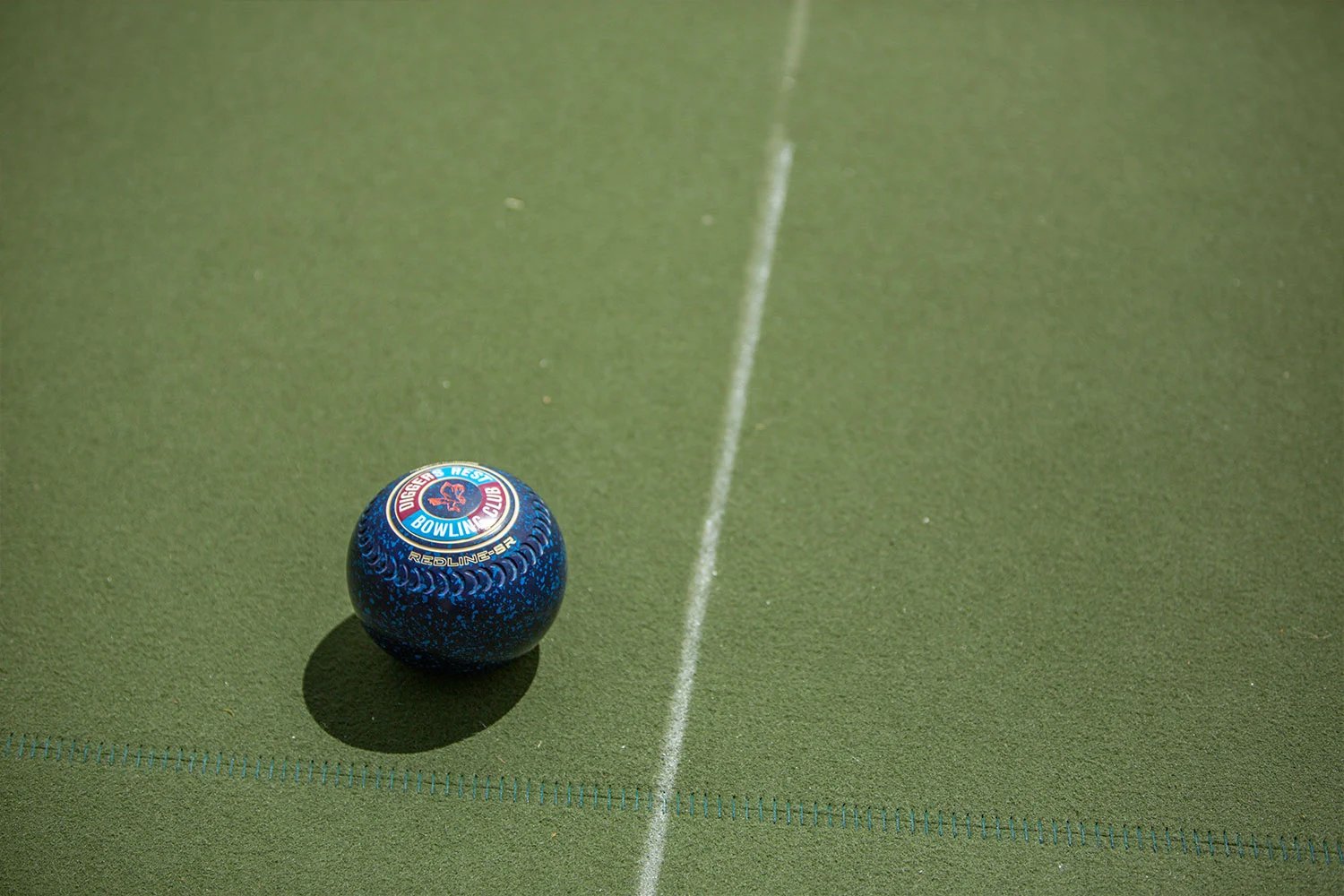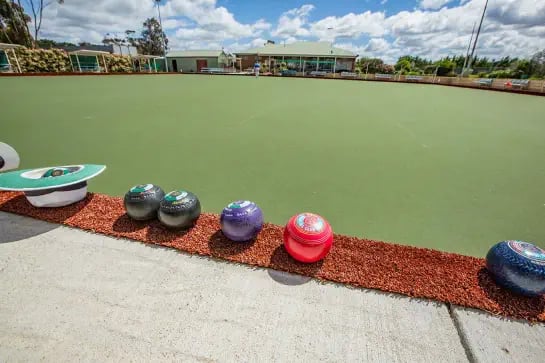SPORTENG specialises in the planning, design and construction phase consulting services of Fields of Play across all sports in Australia. Our experienced team all contribute towards designing high-quality Fields of Play for all levels of use.
Unlike most Fields of Play, a bowling green for lawn bowls must be flat so it doesn’t affect the roll of the bowls. If there are any surface grades, this can negatively impact the bowl and gameplay. Getting the key design elements for a bowling green correct is crucial to the game’s success.
.webp?width=1160&height=773&name=LawnBowls__Overview%20(1).webp)
Due to the strong relationship between the bowl and the surface, the prepared surface needs to be flawless. Traditionally, a bowling green is constructed with a natural turf surface. But due to the maintenance required to preserve a high-performing natural turf surface, the sport introduced synthetic surfaces.
When we design a natural turf bowling green, we equally represent and integrate three important elements to ensure the pitch is properly designed. These elements include:
Our in-house design team addresses these three elements to ensure the design of your pitch is completed to a high quality, and meets your needs and the needs of World Bowls/Bowls Australia.
Synthetic surfaces are becoming a common surface for bowling greens, and the SPORTENG design and engineering teams are well-versed with the requirements of these surfaces. Like the natural turf bowling greens, the underlying profile needs to be free-draining to effectively collect infiltrated water and drain away from the surface.
Our technical expertise underpins all our projects, and we are regularly called upon to work on projects of high significance.
No matter if you’re a governing body or a local school, you will benefit from a sports field that puts the athlete first.
We guarantee that SPORTENG’s designs will meet your needs, while complying with the World Bowls and Bowls Australia standards.
SPORTENG projects run on time and on budget due to our team’s comprehensive 3D design work, exceptional engineering expertise, agronomic and irrigation consultation, along with clear on-site direction.
SPORTENG lives and breathes Fields of Play. We take our love of the game from the grandstand right into our office. We’re proud to be Australia’s leading Field of Play design consultancy.
.webp?width=545&height=363&name=LawnBowls__DesignApproach%20(1).webp)
Our attention to detail is reflected in our mantra,‘measure twice, cut once’.
We’re dedicated to achieving the best results for your venue and its athletes, whether it’s a local legend or the next international star.
Before we commence the design stage, we work with the bowling club members to determine their preference for the surface. We provide relevant information for the club on the different surface options available so that they can consider the advantages and disadvantages for each.
Whether the surface for your bowling green is natural turf or a synthetic surface system, it’s important that it’s flat and remains flat throughout its life. This means that our design approach is the same regardless of the surface options. Our process lets us:
Once we have a deeper understanding of the site, we brief the client and work with them so we can deliver their dream bowling green on time and on budget.
Here at SPORTENG, we take a sustainable approach to all our designs. Not happy with just the status quo, we always strive to investigate new designs and construction techniques that deliver positive environmental outcomes.
We believe sustainability is intertwined with sports greatness.
.webp?width=545&height=363&name=LawnBowls_Sustainability%20(1).webp)
%20(1).webp?width=545&height=412&name=LawnBowls_Sustainability_2%20(1)%20(1).webp)
As part of this, we integrate your requirements, from budget to performance values, through to sustainability practices – this ensures we achieve a successful result.
We consider the following outcomes when we adopt our sustainability approach for creating natural turf Fields of Play. These outcomes include:
When we design a synthetic grass pitch, we consider and additional environmental elements in the planning and design process. These include:
The SPORTENG team considers the whole-of-life cycle and the use of recycled materials at every stage of design and construction. We make sure that a sustainable end-product starts at the beginning of design.
Due to the flat nature of a bowling green, there are only two profile options which can you can consider for your facility. These are both linked to the surface type, and the options include:

There are typically three synthetic surface systems that we use for lawn bowls, which are:
We follow key principles to ensure the long-term success for a bowling green to stay as a flat playing surface. These principles are:

.webp?width=545&height=363&name=LawnBowls__Requirements%20(2).webp)
Typically, a bowling green should be a rectangle or square shape.
The perimeter ditch depth and width should comply with World Bowls standards and should be a mode of a material that will not damage the jack or bowl. The ditch should also be free draining.
The bowling green should consist of a perimeter bank that should comply with the World Bowls requirements. Ideally, the bank should be sloped at an angle towards the green, preventing bowls from rebounding back onto the green.
A shockpad can be used under the synthetic surface to help regulate green speeds and make the surface more comfortable underfoot.